
November 2020, Volume 2, Issue 2
Office of Elementary and Secondary Education (OESE)
Office of State Grant and Program Support Newsletter

From the Deputy Assistant Secretary
Letter From Ruth Ryder, Deputy Assistant Secretary for the Office of State Grant and Program Support

Dear Partners and Stakeholders:
The changing of the weather and vibrant colors of fall usher in the time of year when we pause to reflect on the importance of our communities. For Native Americans, this change of season marks an excellent opportunity to celebrate the rich and resilient fabric of indigenous culture in communities throughout the United States. The Department’s Office of Indian Education (OIE) and I encourage you to take time to recognize indigenous culture of the past and present during Native American Heritage Month https://nativeamericanheritagemonth.gov/.
Twenty years ago, the U.S. Government took a major step in the fight against human trafficking with the passage of the Trafficking Victims Protection Act. I want to direct your attention this month to the important work the Department of Education is doing to support this effort. On Oct. 19, the White House released the National Action Plan to Combat Human Trafficking. Our colleagues in OESE’s Office of Safe and Supportive Schools were instrumental in developing this important work. We committed to the National Action Plan to Combat Human Trafficking and focused our efforts on protecting our most vulnerable students and informing the field on how to reintegrate trafficking survivors into the school system. Our efforts have centered on victim identification and protection, with a keen attentiveness to the needs of our most vulnerable student populations. We held three webinars this year, two of which prioritized online safety. In response to the COVID-19 pandemic and the potential for an uptick in trafficking activity that came with the widespread switch to remote learning, the Department presented two webinars on online safety, with critical safety information for state, local, and school level stakeholders, as well as parents and students. Additionally, we have continued our collaboration with the Department of Health and Human Services and the Department of Justice in the development of grants and programs that better prepare schools and communities to combat human trafficking.
This December, the Department will roll out a webpage dedicated exclusively to human trafficking resources, including our newly revised Human Trafficking in America’s Schools toolkit. It features victim-centered, trauma-informed, and culturally competent research and resources, in addition to useful indicators for identifying human trafficking and protective responses, particularly for the most vulnerable student populations. In the meantime, we encourage you to visit our National Center on Safe Supportive Learning Environments to learn more.
On a final note, I want to be certain that you are aware that on Oct. 20, the Department released draft guidance on modifying the accountability systems described in state plans to account for the lack of data due to the assessment and accountability waivers the Department granted during the 2019-2020 school year. This document is available for stakeholder input through Nov. 20. We also released an optional State Plan Addendum template that provides a streamlined process for a state interested in making a temporary change to its state plan for this year. More information is available here.
All the best –
Ruth Ryder
|

Featured TA Center: What is NCSSLE?

The National Center on Safe Supportive Learning Environments (NCSSLE) is funded by the Department’s Office of Safe and Supportive Schools. The Center offers information and technical assistance to states, districts, schools, institutions of higher education, and communities focused on improving school climate and conditions for learning. NCSSLE operates under the premise that, with the right resources and support, educational stakeholders can collaborate to sustain safe, engaging, and healthy school environments that support student academic success.
The NCSSLE website serves as a central location for resources from the Center. It includes information about the Center’s training and technical assistance resources, products and tools, and latest research findings.
NCSSLE’s three main areas of support are:
- Providing training and support to state administrators, including 27 grantees funded under the Mental Health Service Professional Demonstration Grant program, 15 grantees funded under the Project Prevent Grant program, five grantees funded under the Trauma Recovery Demonstration Grant program, school and district administrators, institutions of higher education, teachers, support staff at schools, communities and families, and students.
- Seeking to improve schools’ climate and conditions for learning through measurement and program implementation, so that all students have the opportunity to realize academic success in safe and supportive environments.
- Promoting and managing the U.S. Department of Education School Climate Surveys (EDSCLS) maintenance and help desk hotline.
To contact the National Center on Safe Supportive Learning Environments, call 1-800-258-8413 or e-mail ncssle@air.org.
|

Meet Department Staff Member Earl Myers
Learn more about Earl Myers, an employee of the Department who works closely with NCSSLE.
- How long have you been at the Department?
I have been with the Department of Education for 20 years and a member of the Office of Safe and Supportive Schools for each of those years.
- What do you most enjoy about working at the Department?
I truly enjoy working on programs and initiatives that have the potential for positively affecting the lives of students in great numbers. However, what makes this work even more special for me is being a member of a dedicated Office of Safe and Supportive Schools (OSSS) OESE “family” who all share the same passion for the students, teachers, states, and LEAs we serve.
- What did you do before coming to the Department?
Prior to coming to the Department, I served as an elementary school teacher with Montgomery County Public Schools in Maryland. I am also a retired United States Marine.
- What is your goal for the TA Center? Or what is one thing you’d like to see happen for this TA Center in the next year?
My goal for NCSSLE next year is to continue to make the general public aware of the type of support they provide for ED-funded initiatives and programs administered by OSSS. NCSSLE will continue to provide excellent intensive customized training and technical assistance to OSSS federally supported grant programs funded under Project Prevent, Trauma Recovery Demonstration, Mental Health Professional Service Demonstration, and the new School-Based Mental Health Services Program. NCSSLE will also continue their work with other federally funded efforts in related subject matter areas — such as violence prevention, trauma-informed care, bullying prevention, school based mental health, human trafficking, positive school climate implementation, implementation sciences, and evidence-based practices — and in the use of the ED School Climate Surveys.
|

Technical Assistance Resources - Featuring Online Safety

Welcoming, Safe, and Supportive Schools
This year, back-to-school has presented historic challenges that changed the way schools across the country welcomed students back, either in person and/or remotely. Actively addressing school climate and culture and attending to students’ physical, mental, and emotional well-being is more important than ever to ensure all students and families feel welcomed, safe, and supported in their school environments.
Creating welcome, safe, and supportive schools: OESE’s Resources for Education Providers and Families webpage includes topical pages about Safe School Environments and Social Emotional and Behavioral Support. These pages provide resources to support district leaders, school leaders, and educators in creating welcoming, safe, and supportive learning environments. Additional topical pages share tools for continuity of learning, learning at home, supporting special populations, and returning to school.
|
|
Centers for Disease Control Guidance
View the Centers for Disease Control and Prevention (CDC) guidance and decision-making indicators for schools here.
|
|
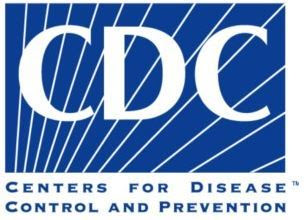 |

Discover Resources to Create a Safer School
The Federal School Safety Clearinghouse (FSSC), in coordination with the White House, launched the SchoolSafety.gov website for the K-12 school community and education stakeholders. This site posts resources to foster supportive learning environments, mental health and wellness, social and emotional learning, and school safety. The website includes a designated COVID-19 page. There is also a State Information Sharing Tool to provide the academic community with a one-stop shop for accessing state-specific school safety information, including programs, resources, contacts, and engagement opportunities.
|

Response to Disruption Resources
The National Comprehensive Center just unveiled a new set of Response to Disruption Resources, intended to help school administrators mitigate the impact of disruptions currently facing districts and schools and to foster student academic success. Resources in this collection include:
|

- The After-Action Review Guide for state, district, and school leaders supports the improvement of education service delivery. This guide includes questioning protocols and creates a process through which a team can analyze its response to a situation and review what worked, what didn’t work, and what can be done to improve moving forward.
- Returning to School: A Toolkit for Principals provides school leaders with resources to prepare for the return to in-person instruction, at home learning, or both. This toolkit includes suggested actions, recommended resources, and quick tip sheets that support school leaders with addressing change, communication, collaboration, and care in the time of COVID-19.
|

Seven Ways Schools Can Maintain Supportive Climates
A positive climate is crucially important to school success. Climate affects attendance, engagement, learning, and even graduation rates. IDRA EAC-South created a printable infographic for schools on ways to maintain safe and supportive learning environments for students, teachers, staff, and families during the pandemic. This resource is also available in Spanish.
|
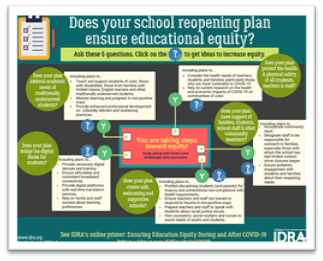
Guide to Ensuring Education Equity During and After COVID-19
IDRA EAC-South also developed a Guide to Ensuring Education Equity During and After COVID-19 (in Spanish) for education leaders and state officials to provide specific recommendations on policy and best practices that help ensure education equity during and after the pandemic. This resource includes:
- Policies to Support Learning through the 2020-21 School Year
- Budget and Policy Information for School Districts in State Legislative Sessions
- Linked Resources and Tools for Ensuring Equity in COVID-19 Responses
|
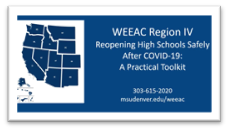
Reopening High School: Addressing Reopening Safely for Instruction after COVID-19
The Western Education Equity Assistance Center created a video presentation and a brief on ways administrators and educators can safely reopen high schools after the pandemic. These resources provide educators with tools to ensure all groups of students achieve at high levels after reopening occurs, in secure learning environments conducive to student achievement.
|
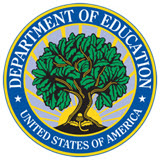
Department of Education Releases Guidance on Modifying State Plan Accountability Systems
On Oct. 20, the Department released draft guidance on modifying the accountability systems described in state plans to account for the lack of data due to the assessment and accountability waivers the Department granted during the 2019-2020 school year. This document is available for stakeholder input through Nov. 20. The Department also released an optional State Plan Addendum template that provides a streamlined process for a state interested in making a temporary change to its state plan for this year. More information is available here.
|
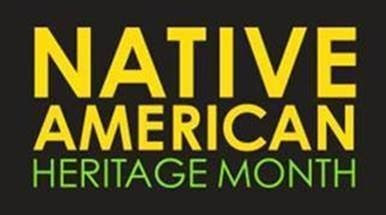
Celebrating Native American Heritage
The month of November marks an excellent opportunity to celebrate the rich and resilient fabric of indigenous culture throughout the United States. The Office of Indian Education (OIE), which funds the Native American Language, State Tribal Education Partnerships, Native Professional Development, and Accessing Choice in Education grant programs, encourages you to take time to recognize indigenous culture of the past and present at https://nativeamericanheritagemonth.gov/.
|

Impact Aid Webinar Series
New to Impact Aid or in need of a refresher? The Impact Aid Program recently released the schedule of webinars offered through spring 2021. Attend a session led by one of our analysts on various topics, including India
![]()
About the Author
Ruth Ryder is the Deputy Assistant Secretary for the Office of Office of State Grant and Program Support in the Office of Elementary and Secondary Education (OESE) at the U.S. Department of Education. In this role, Ms. Ryder oversees a broad range of management, policy, and program functions related to formula and discretionary grant programs under the Elementary and Secondary Education Act, as amended by the Every Student Succeeds Act (ESEA). Ms. Ryder was previously the deputy director of the Office of Special Education Programs in the Office of Special Education and Rehabilitative Services, which she joined in 1988. Prior to joining the Department, Ms. Ryder was a program administrator in a Washington state school district. There she had responsibility for the Elementary and Secondary Education Act Title 1 and Title II programs, state-remediation, gifted education, outcome-based education, and state- and district-wide testing programs. Ms. Ryder has a bachelor’s degree in psychology and elementary education and a master’s degree in special education.
Read next
Projects & Events
Bruman Group Spring Forum | April 29th - May 1st
USED & White House
President Signs Executive Order to Dismantle ED
USED & White House
ED Releases Guidance on Inclusive Practices Under IDEA and ESEA
| |






















